The cheesecake should be cool after baking so that they are in the best shape upon serving.
If you want to chill your cheesecake, but you are stressed by the time, you can speed up the process using a freezer.
Proper preparation of the cheesecake will ensure its best condition until you consume it.
Cooling a cheesecake needs a lot of patience.
You will need suitable pans and methods to ensure that the cheesecake is perfect.
Also, you cannot cool a cheesecake quickly. However, the tips below will help you on how to cool a cheesecake efficiently.
| [easy_feature_table id=’1788′ /] |
Cooling It on a Wire Rack for 1 to 3 Hours
You can place the cheesecake pan on a wire rack to cool at room temperature.
You need to make sure that it is cold before putting it in the fridge.
When you place cheesecake in the refrigerator, cover the dessert with plastic wrap.
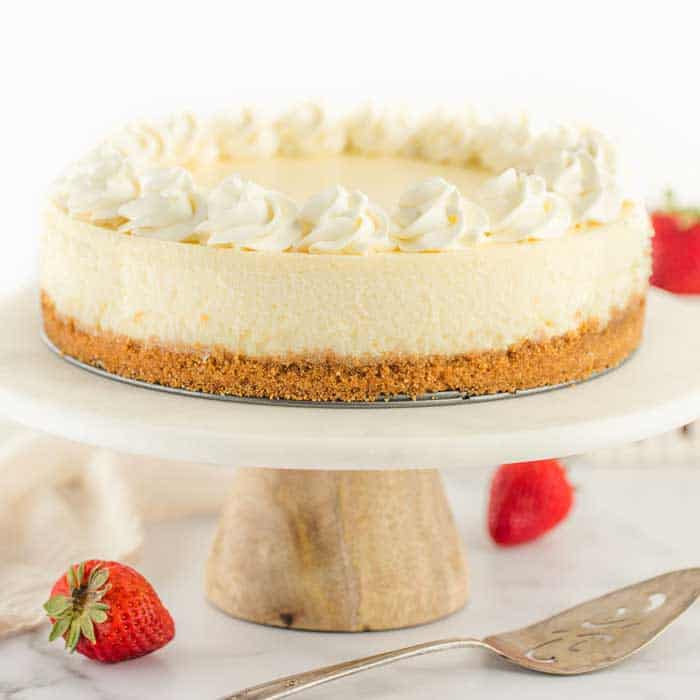
Refrigerate the cheesecake for 24 hours, then serve. Cooling the cake in this manner allows the flavors to blend.
Proper cooling will give richness to the cake.
Preparing the Pan
In preparing your cheesecake, the sides and the bottom of the steel are buttered.
You choose a pan that features three-inch sides and a removable bottom.
It comes in two pieces and has more depth than a regular cake pan.
In removing a finished cake, you only need to open the clamp, which releases the bottom. It keeps you from turning the cake upside-down, which can easily damage the dessert.
The bottom piece should be flat, and the texture should not be raised-edge.
With this, you can remove the cheesecake without touching the edges and marring them.
Cheesecake Ingredients
In making a cheesecake, it is necessary to use only the freshest ingredients available.
Start with the components at room temperature, or around 68 degrees Fahrenheit. You must have a quick-reading thermometer to check the ingredients’ temperature.
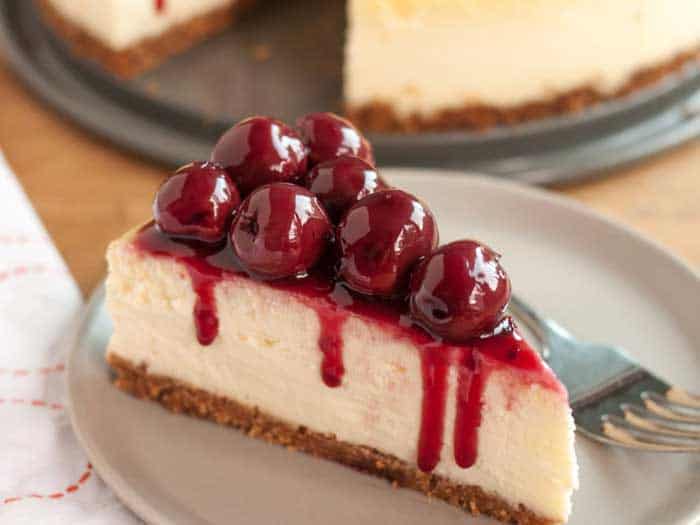
Cheesecake ingredients should be gathered and pre-measured before you prepare them for baking. Here is the list of ingredients in making cheesecake.
Cheese
Cheese is known to be the heart of cheesecake.
The types of cheese include cream cheese, cottage cheese, Neufchatel, mascarpone, farmer cheese, or ricotta.
It would be best if you don’t use fat-free or reduced-fat cheeses.
Cream
Most cheesecake recipes need heavy whipping cream, sour cream, or half and half.
The cream will give the cheesecake a creamy and smooth texture.
Creams that are fat-free or made with reduced fat are not advisable.
Sweetener
In making cheesecake, you will need to use brown or granulated sugar, confectioner’s sugar, or honey.
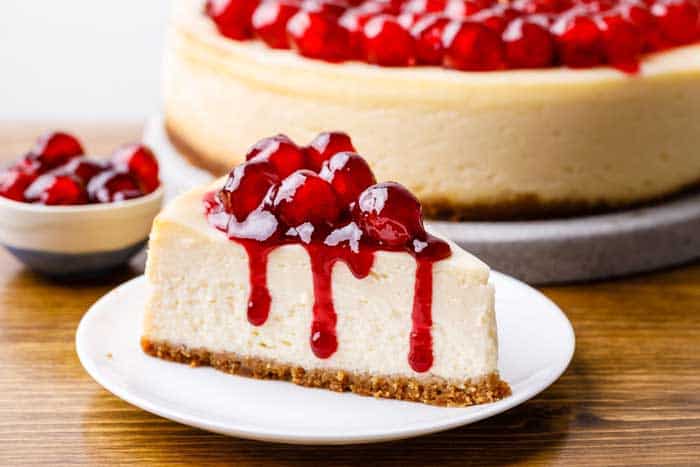
Eggs
The eggs bind the dessert and give structure to the cheesecake, also helps in providing a creamy texture and adding richness.
Flavorings
The flavor of cheesecake may vary upon the ingredients as they add flavors to the cheesecake, making it unique.
Typical flavors include chocolate, spices, fruits, and nuts.
Making the Crust
Crushed graham crackers make the classic cheesecake crust.
You mix the cracker crumbs with melted butter and add a spoonful or two of sugar to sweeten.
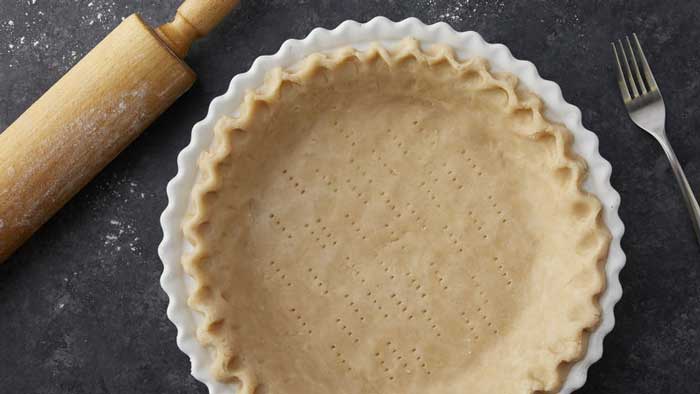
You can add a few chopped nuts or cinnamon, a crush of chocolate wafers, or gingersnap cookies into the cheesecake crust.
Pour it into a buttered baking pan after blending the crumb mixture for the crust.
Pre-Baked Crusts and Bases
You may use either the flat bottom of a measuring cup or a large spoon to press the crumbs evenly and firmly.
Then, you can use your fingertips to extend the crust to the sides of the pan.
The process of pre-baking will provide texture and keep the crust from crumbling.
It would help if you cooled a pre-baked crust before adding the cheesecake filling.
Preparing the Filling
Soften the cheese at room temperature to keep it smooth and avoid lumps.
It would be best if you allowed the cheese to sit at this warmth for about 30 minutes.
The time may vary slightly depending on your kitchen’s temperature.
Adding the Eggs
The eggs should be at room temperature to act as an emulsifier.
The butter and sugar in the recipe will clump if the eggs are cold.
So, remove the eggs from the fridge and place them on your counter for 30 minutes.
Place the eggs in warm water if you want to speed up the warming.
It is always best to mix the sugar with the cheese before you add the other ingredients.
Using an electric mixer or following a manual process, blend the sugar and cheese at low speed.
You should add one egg at a time for the best results.
Next, pour in the liquids and creams and blend well before adding the flavorings.
You can fold the fruits or nuts gently by hand into the mix.
Don’t Beat the Batter
Avoid beating the cheesecake batter. Try to mix the ingredients quickly to reduce air bubbles.
If you overbeat the batter, it will produce too many air pockets that puff out of the cheesecake during baking and lead to cracks during cooling.
Use a Food Processor for Faster Preparation
If you can’t wait on refrigerating ingredients, use a food processor to blend the filling.
This machine causes less air to form, creating a creamy and smooth texture.
Practice Patience
You should always be patient. Baking a cheesecake takes time, lots of it.
Many recipes say to let the cheesecake sit in the turned-off oven with the door cracked for about an hour, then let it cool completely on the counter.
The dish also needs to spend four hours, ideally the entire night, in the fridge before it can be sliced and eaten to ensure the perfect velvety smooth texture.
Bake and Cool the Cheesecake Slowly
It is best to bake the cheesecake slowly in an oven at 325 to 350 degrees Fahrenheit.
Partially cool the cake by turning off the oven and leaving the cake for an extra hour.
You can remove the dish from the oven and finish the cooling process on a wire rack.
Remember this rule of thumb: a cheesecake does not adapt to a sudden change of temperature.
The process of cooling should be gradual and never a quick one.
Never open the oven door during the initial 30 minutes of baking.
It can cause the cheesecake to crack. A cheesecake continues to bake during cooling. It is the reason why over-baking will lead to cracks.
Put the wrapped cheesecake in the freezer and allow it to cool for an hour. Place your chosen topping in some Tupperware in the refrigerator.
Let the warm cheesecake cool on the counter at room temperature for 30 minutes.
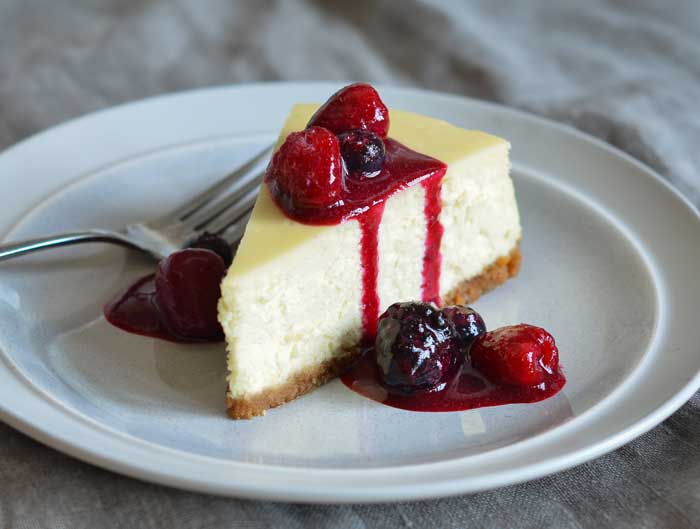
Transfer it to the refrigerator for approximately two hours.
Remove your cheesecake from the fridge and wrap it securely in plastic wrap. Place it on a cake container and seal it.
Please put it back in the refrigerator and store it for up to five days until it is ready to serve.
Some More Tips to Consider
If you plan to buy a ready-made cheesecake, refrigerate it promptly.
Wrap the cheesecake tightly in aluminum foil and keep it in the freezer for up to three months.
If you want to eat the dish, remove it from the freezer and put it in the refrigerator for eight hours before serving.
Cheesecake requires refrigeration. It will be unsafe if you leave it out too long.
Final Thoughts
Cheesecakes are one of the most delectable desserts that you can create even at home. With its lightly sweet and creamy filling, there’s no way you could resist trying it.
It’s either you will make your cheesecake, or you will buy it from a bakery or supermarket on a regular basis.
Storing is an integral part of keeping dishes as fresh and flavorful as possible, the same goes for this extraordinary delicacy.
I hope you have learned something about how to cool cheesecake in this article.
It will be up to you if you will follow the steps, or you will browse more tips on the internet.

